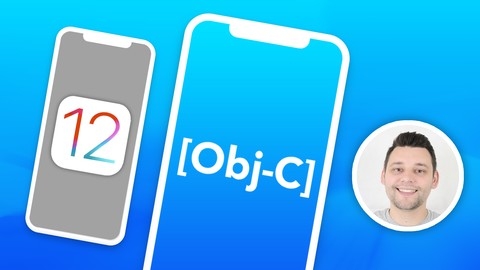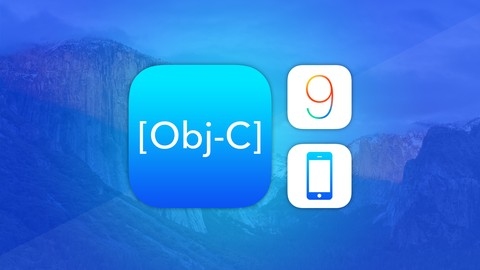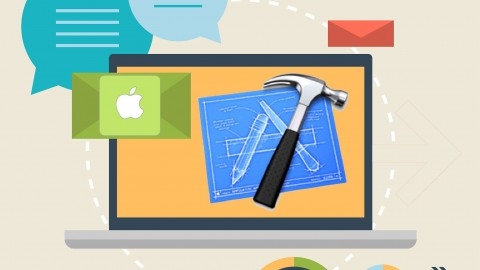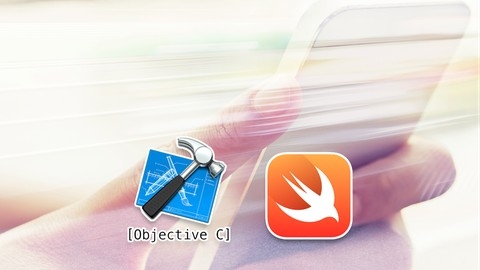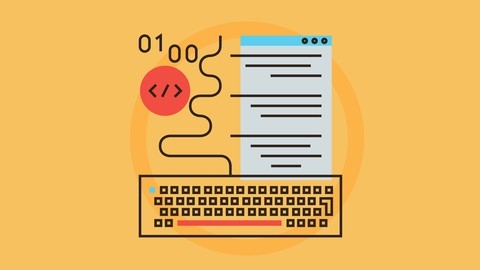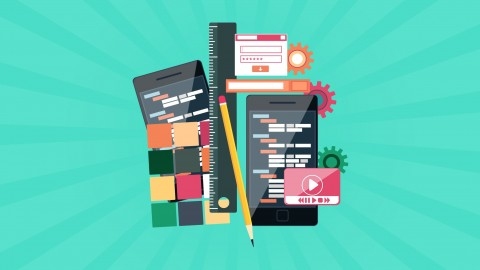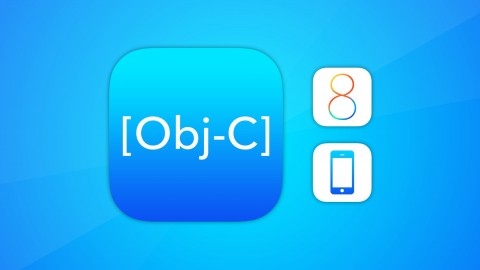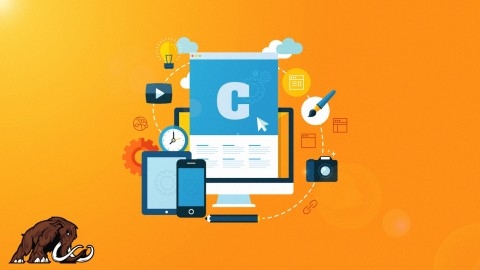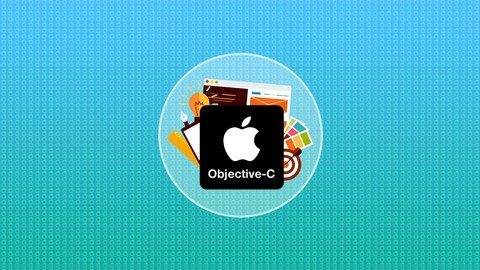Objective-C is a powerful programming language used for developing iOS and macOS applications.
It was the primary language for Apple’s platforms for years and is still relevant for legacy apps and working with existing codebases.
By learning Objective-C, you can tap into a large ecosystem of libraries and frameworks, gain a deep understanding of how iOS apps work, and contribute to existing projects.
If you’re looking to learn Objective-C, finding a high-quality course that caters to your needs can be challenging.
You want a course that provides a strong foundation in the language, covers essential concepts, and guides you through practical projects.
We’ve carefully reviewed numerous Objective-C courses on Udemy, and based on our analysis, Objective-C Crash Course for Swift Developers stands out as the best overall option.
This course is specifically designed for Swift developers, making it an ideal choice for those familiar with modern iOS development practices.
It covers all the essential concepts of Objective-C, from syntax and data types to object-oriented programming and memory management.
The course also includes practical projects that allow you to apply your knowledge and build real-world iOS applications.
While Objective-C Crash Course for Swift Developers is our top pick, other great options are available.
Keep reading to explore our recommendations for different learning styles and goals, from beginner-friendly introductions to advanced courses focused on specific Objective-C libraries and frameworks.
Objective-C Crash Course for Swift Developers
The course covers all the essential topics you need to learn Objective-C and build iOS apps with it.
You’ll start by getting familiar with the basics of Objective-C, including its syntax, data types, strings, numbers, and control flow statements.
You’ll also learn about important concepts like properties, instance variables, getters, setters, and pointers.
As you progress, you’ll dive deeper into Objective-C’s object-oriented programming features, arrays, dictionaries, loops, and methods (functions).
The course also covers advanced topics like weak/strong references, retain cycles, initializers, nullability (similar to Swift’s optionals), and categories.
One of the highlights is learning how to integrate Objective-C with Swift, allowing you to work with both languages in your iOS projects.
You’ll build a complete iOS chat app from scratch, covering everything from creating the project and setting up a Node server to implementing table views, custom cells, and making network requests.
You’ll also learn JavaScript, which is essential for building server-side applications with Node and Express.
You’ll cover JavaScript fundamentals like strings, numbers, conditionals, loops, arrays, and objects, preparing you to work with Node and build a server for your Objective-C iOS app.
Throughout the course, you’ll work on several exercises to reinforce your learning, including converting Swift apps to Objective-C, translating Swift code to Objective-C, and extending the iOS chat app you built earlier.
iOS 12 & Objective-C - Complete Developer Course
The course starts with the fundamentals of Objective-C programming.
The course covers variables, data types like strings, integers, booleans, and arrays, as well as control flow statements like if statements, loops, and switch statements.
You’ll also learn how to create and use functions.
With this foundation, you’ll build a variety of practical apps that apply these concepts.
For example, you’ll create a fancy text creator app to change text properties and display custom fonts.
You’ll build games like a traffic lights game, a tap reaction game using timers, and a shake gesture game.
The course explores random number and word generators, allowing you to create apps like a dice roller, random facts, and car statistics apps.
You’ll learn to create actions triggered by buttons, switches, sliders, and even build a calculator app.
The course covers more advanced topics like displaying views like UIScrollView, UIAlertView, and UIStackView.
You’ll work with web views to build a browser app, map views for location apps, and image views for galleries.
The camera and photo library are utilized in a camera app.
Other app types you’ll build include a sticker pack app, audio apps with sound effects, table views like a London landmarks app, and tab bar apps for businesses with sections like services and portfolios.
The course even covers monetization through admob ads and in-app purchases.
Throughout, you’ll learn techniques for handling different screen sizes, loading specific storyboards, and supporting universal apps for iPhone and iPad.
iOS 9 & Objective-C - Make 20 Applications
The course starts with the basics, guiding you through setting up your development environment, including purchasing a developer license, installing Xcode, and creating the necessary certificates and App IDs.
You’ll dive into the fundamentals of Objective-C, learning about classes, Info.plist files, delegates, and the Interface Builder.
The course walks you through building your first “Hello World” app for iOS, teaching you how to create actions, outlets, and handle constraints for different screen sizes.
As you progress, you’ll learn about displaying text, working with fonts, timers, and handling user input through controls like switches, sliders, and segmented controls.
You’ll build practical apps like a reaction game, temperature calculator, and even a calculator app, giving you hands-on experience with concepts like random number generation and gesture detection.
The course covers essential iOS components like UIViews, UIScrollViews, UIAlertViews, UIPickerViews, and UIWebViews.
You’ll learn how to display maps, images (including Retina images), and PDFs within your apps.
Exciting projects like a browser app, maps app, and a camera app will reinforce these concepts.
Audio functionality is also covered, allowing you to build apps like a soundboard and integrate YouTube videos.
The course delves into creating tab bar and table view applications, teaching you how to populate and customize table views with headers and detail views.
Data persistence is a crucial aspect, and you’ll learn how to save and load text and data using Core Data to create databases within your apps.
Social integration is explored, enabling you to post text and images to Facebook and Twitter, send SMS messages and emails, and even make phone calls from within your apps.
Monetization strategies are discussed, including displaying iAd advertisements and implementing in-app purchases.
You’ll learn how to handle device detection for creating universal apps that work seamlessly across different iOS devices.
Finally, the course guides you through the process of submitting and publishing your apps to the App Store, ensuring you’re well-prepared for deploying your creations to the world.
Learn Objective C Programming for iOS Apps
You’ll start with an introduction to Objective-C, covering types and structs.
The course then dives into pointers and arrays, providing in-depth explanations and demos.
Moving forward, you’ll learn about classes and objects, which are fundamental concepts in Objective-C.
The course dedicates multiple lessons to these topics, including demos to reinforce your understanding.
You’ll also explore properties and methods, essential for working with objects.
Inheritance and polymorphism are covered in detail, with demos to illustrate these important concepts.
The course also delves into object properties and Automatic Reference Counting (ARC), which is crucial for memory management.
You’ll gain a solid understanding of NSString and NSArray, two widely used classes in Objective-C.
The course includes discussions and demos for both, ensuring you can work with strings and arrays effectively.
Additionally, the syllabus covers NSSet and NSDictionary, which are essential for working with collections in Objective-C. You’ll learn about delegation, categories, and extensions, which are powerful features that allow you to extend the functionality of existing classes.
Throughout the course, you’ll find discussions and demos for each topic, ensuring you have a practical understanding of the concepts.
Mixed Language App Development with Objective-C and Swift
The course starts by introducing you to how apps are built, covering the three main components - the integrated development environment (Xcode), the programming languages (Swift and Objective-C), and the frameworks (Cocoa and Cocoa Touch).
You’ll learn to set up your development environment and register as a developer.
The course dives deep into understanding key concepts like nil objects, optionals, and named parameters in both Objective-C and Swift.
It covers working with classes, creating instances, declaring properties and variables, initializing objects, using getters/setters, and writing methods.
The syllabus includes mixing Objective-C and Swift code, covering topics like bridging between the two languages, using selectors, and implementing classes across projects.
You’ll explore the differences between classes, structs, and enums in Swift.
The course also teaches you how to work with switches, blocks/closures, subscripts, and custom operators.
Throughout the lessons, you’ll gain hands-on experience writing code in both Objective-C and Swift.
The course compares and contrasts the two languages, helping you understand their similarities and differences.
You’ll learn about the class hierarchy, base classes like NSObject, lazy initialization, generics, tuples, and more.
Learning Objective-C Programming
You’ll start by getting familiar with Xcode’s interface, including the workspace window, navigation area, utilities area with the library and inspectors, code editor, and advanced features like finding and searching code, using the jump bar, and tracking changes with branches.
Next, you’ll dive into the fundamentals of Objective-C, a superset of C that adds object-oriented capabilities.
You’ll learn about the class hierarchy, sending messages between objects, definitions and declarations, and the structure of an Objective-C app.
The course walks you through building a sample app step-by-step, covering topics like creating classes, using properties (including custom getters and setters), memory management with automatic reference counting (ARC), and building the user interface.
You’ll also explore key language features like collection classes (arrays and dictionaries), protocols and delegates (for handling the “multiple inheritance” issue), class extensions and categories for adding functionality, blocks (closures), exception handling, and the target-action pattern for control flow.
Throughout the course, you’ll gain hands-on experience with Xcode’s debugger, setting breakpoints, exploring variable values, and stepping through code.
The course emphasizes practical skills by having you write code, test apps, and use Xcode’s tools effectively.
Objective C for iPhone-iPad App Programming
This course starts by guiding you through the installation and setup of Xcode, which is an Integrated Development Environment (IDE) created by Apple for building software for their platforms.
Once you have Xcode up and running, the course dives into the fundamentals of programming.
You’ll learn about variables, data types, and how to perform basic mathematical operations using operators.
The course covers different types of operators, including arithmetic, comparison, and compound operators, ensuring you have a solid grasp of these essential concepts.
From there, you’ll explore control flow statements like if-else and switch statements, which allow you to control the execution of your code based on certain conditions.
The course also introduces you to loops, including for, while, and do-while loops, enabling you to repeat code blocks and iterate over data structures.
Moving on, you’ll delve into the world of objects and classes, which are fundamental concepts in object-oriented programming.
You’ll learn how to create objects, define their properties (instance variables), and access or modify those properties using getter and setter methods.
The course covers both the traditional way of defining getters and setters, as well as the more modern approach using synthesized accessors.
Throughout the course, you’ll also learn about local variables and how to use them effectively within your programs.
Local variables have a limited scope and are useful for storing temporary data or intermediate results within a specific code block or function.
The Complete Objective-C Guide for IOS 8 and Xcode 6
This course starts by walking you through the setup process, including downloading and installing Xcode, obtaining a developer license, and creating the necessary certificates and app IDs.
You’ll then dive into the fundamentals of Objective-C, such as classes, functions, and working with the Interface Builder.
The course covers building apps for both the iOS simulator and physical devices, giving you hands-on experience with the full development cycle.
From there, you’ll learn how to create user interfaces with various UI components like text fields, alerts, pickers, web views, and map views.
You’ll also explore handling user interactions through actions, outlets, and gestures like shakes.
The course teaches you how to work with different types of data, including text, images (regular and Retina), PDFs, and even live data from URLs.
You’ll learn techniques for displaying this data, as well as saving and loading it.
Audio and video playback are covered, allowing you to incorporate multimedia into your apps.
This includes playing local files, streaming from the internet (including YouTube), and even live radio.
You’ll gain experience with more advanced app features like tab bar and table view controllers, push transitions between views, and customizing the navigation experience.
The course also shows you how to integrate social media functionality for posting to Facebook and Twitter, as well as sending emails and SMS messages.
To enhance the user experience, you’ll learn about animations, loading screens, app icons, and taking screenshots programmatically.
The course even touches on monetization through in-app purchases, iAd, and AdMob advertisements.
Finally, you’ll prepare your app for submission to the App Store by handling universal views, supporting multiple devices, and going through the publishing process.
Learn how to code in objective c for beginners
Once you have Xcode set up, the course dives into the fundamentals of programming.
You’ll learn how to create a new project, navigate the interface, and add comments to your code.
The course covers essential programming concepts like variables, data types (int, float, char), and printing values to the console using printf.
As you progress, you’ll explore the differences between static and dynamic programming languages, with Objective C being a static language.
The course dedicates significant time to control flow statements like if, else, and elif, which are crucial for creating logic in your programs.
You’ll learn how to use operators (arithmetic, logical) and combine them with if statements to perform calculations and handle errors.
Throughout the course, you’ll practice writing code that incorporates the concepts you’ve learned.
Design Patterns In Objective C iOS Programming for Projects
You will start by learning the fundamentals of design patterns, their history, classification, and how to describe them effectively.
The course covers creational design patterns in-depth, including Abstract Factory, Builder, Factory Method, Prototype, and Singleton patterns.
For each pattern, you’ll learn the concept, see an implementation in Objective-C, and solve design problems to reinforce your understanding.
Next, you’ll dive into structural design patterns like Adapter, Bridge, Composite, Decorator, Facade, Flyweight, and Proxy.
Again, the course explains each pattern’s structure and purpose, provides Objective-C examples, and challenges you with practical design problems.
The behavioral design patterns section covers Chain of Responsibility, Command, Interpreter, Iterator, Mediator, Memento, Observer, State, Strategy, Template Method, and Visitor patterns.
You’ll gain hands-on experience implementing these patterns in Objective-C and applying them to real-world scenarios.
The course also includes a comprehensive case study on SysMan, a system management product.
You’ll learn how to apply various design patterns to meet the product’s requirements, architecture, and design challenges.
Throughout the course, you’ll complete quizzes and design problems to solidify your understanding of each pattern and its implementation in Objective-C.
The course provides source code for all the patterns covered, allowing you to reference and learn from real-world examples.


